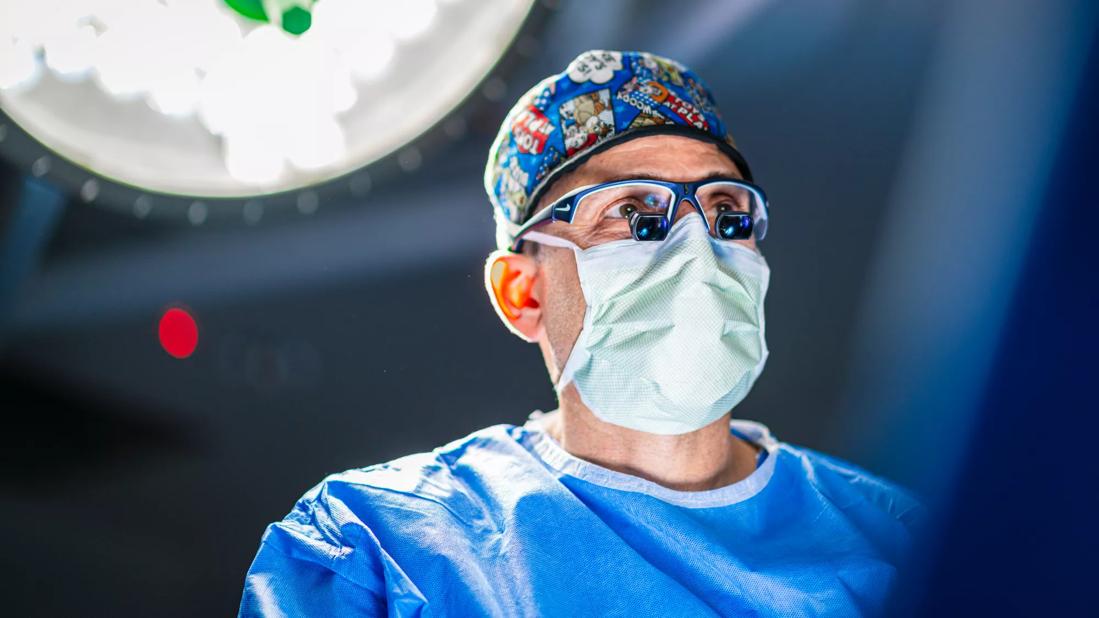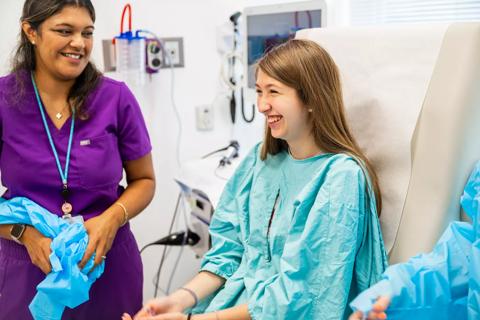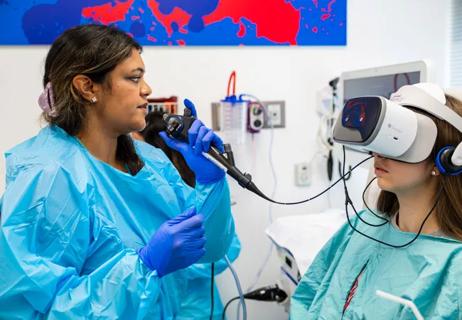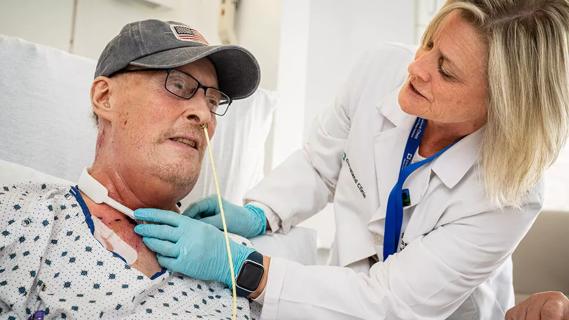Case highlights the benefits of a minimally invasive approach

During a pregnant patient’s prenatal screening, doctors noticed the fetus’s esophagus was not developing normally and suspected esophageal atresia. The diagnosis was confirmed after birth with X-ray imaging and by inserting a catheter that was unable to pass through the esophagus.
Advertisement
Cleveland Clinic is a non-profit academic medical center. Advertising on our site helps support our mission. We do not endorse non-Cleveland Clinic products or services. Policy
The patient was also screened for cardiac and renal malformations, which are comorbidities in around 15% of cases; however, the baby’s heart and kidneys were found to be normal.
There are several types of esophageal atresia, some requiring surgery immediately. Further examination determined that the newborn’s type involved the distal esophagus being fused to her trachea while her proximal esophagus was completely closed. Surgery was required within 24 hours.
More than 90% of patients with esophageal atresia in the United States undergo open-chest surgery. However, a minimally invasively approach, without the necessity to do an open surgery has existed for nearly 20 years.
For this patient, surgeons at Cleveland Clinic Children’s performed a minimally invasive surgery to repair the defect less than 24 hours after birth. Surgeons made two 3 mm incisions and one 5 mm incision in the chest and performed the surgery thoracoscopically.
Surgery involved disconnecting the esophagus from the trachea and then reconnecting the esophagus to itself.
All esophageal atresia surgeries at Cleveland Clinic Children’s are now being done minimally invasively unless the patient has a specific medical reason for why they are not a candidate, says Miguel Guelfand, MD, head of Pediatric General and Thoracic Surgery.
Minimally invasive surgery offers many advantages over open-chest esophageal atresia surgery, including less trauma, less pain, shorter length of stay and no scarring, he says.
“The outcomes are not the same: they are better,” he stresses.
Advertisement
For this patient, the surgery was successful, with no complications. The patient recovered as expected and was eating five days after surgery.
“She’s now a healthy, normal, 2-month-old baby, eating normally, thriving, and without scars like it never happened,” Dr. Guelfand says.
The post-surgery treatment plan involves following up with the patient for at least two to three years so that doctors can monitor for complications related to the original birth defect, including dysphasia and stenosis of the esophagus. Because GERD is common in up to 60% of patients diagnosed with esophageal atresia, the patient will also be prescribed medication for at least six months, he says.
Cleveland Clinic Children’s is ideally positioned to treat patients with esophageal atresia, Dr. Guelfand notes, with a highly experienced Maternal and Fetal Medicine Department and NICU as well as the most advanced technology and equipment.
Providers should consider referring their pregnant patients before birth if they suspect the fetus has esophageal atresia. If the condition is diagnosed after birth and the patient is stable enough for transport, they can refer the patient at that time.
Dr. Guelfand hopes more centers in the U.S. will make the shift to minimally invasive surgery for esophageal atresia. He notes that the surgery requires an anesthesiologist who is experienced in managing these types of patients.
In addition to having better outcomes and faster recovery, the approach can make it easier for surgeons to see the features of a tiny patient’s anatomy since surgery is navigated by camera, with the image augmented by a factor of 25.
Advertisement
“We want to spread the word that we need to stop doing open surgery for this condition because it’s a major trauma,” he says. “If we can avoid opening the chest and do the exact same surgery or better with minimally invasive surgery and have better outcomes, that’s the way to do it.”
Advertisement
Advertisement

25-year series of over 1,000 patients reveals good long-term palliation, esophageal preservation

Potential for new, non-invasive screening option

Pediatric and adult gastroenterologists offer team care for patients with eosinophilic esophagitis

3 pediatric gastroenterologists discuss advances in their diagnostic toolkits

Going beyond the Eckardt symptom score to evaluate dyspepsia, eating and symptom “bother”

Modified Barium Swallow Study and Flexible Endoscopic Evaluation of Swallowing can both be used to diagnose dysphagia, but it’s important to understand their advantages and disadvantages

Microvascular “supercharging” is a critical newer step to promote favorable outcomes

Least-invasive open-heart AVR option to date yielded rapid recovery in all cases